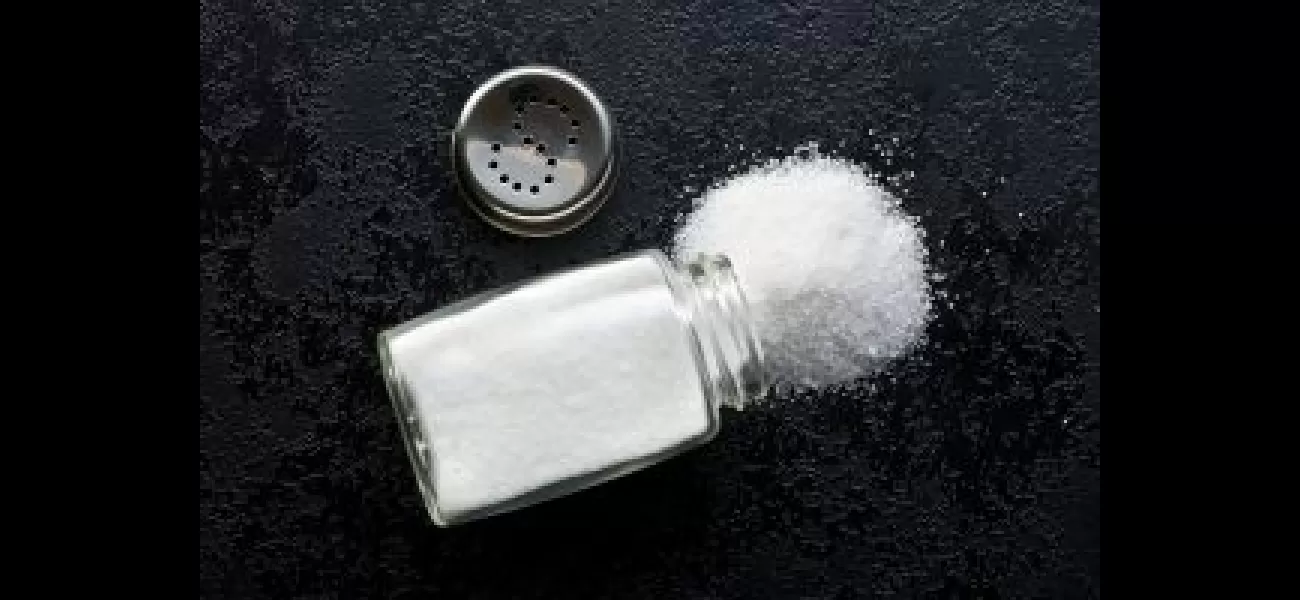A recent study found that all Indian salt and sugar brands contain microplastics.
A recent study found that all Indian salt and sugar brands, regardless of size or packaging, contain microplastics.
August 13th 2024.

In a recent study published on Tuesday, it has been discovered that all Indian brands of salt and sugar, regardless of their size or packaging, contain microplastics. This study, titled "Microplastics in Salt and Sugar," was conducted by the environmental research organization Toxics Link. The team tested 10 different types of salt, including table salt, rock salt, sea salt, and local raw salt, as well as five types of sugar purchased from both online and local markets.
The results of the study were quite alarming as it revealed the presence of microplastics in all of the salt and sugar samples in various forms such as fibers, pellets, films, and fragments. These microplastics were found in sizes ranging from 0.1 mm to 5 mm. Interestingly, the highest concentration of microplastics was found in iodized salt, specifically in the form of multi-colored thin fibers and films.
When asked about the purpose of the study, founder-director of Toxics Link, Ravi Agarwal, stated that their goal was to contribute to the existing scientific database on microplastics. They hope that by shedding light on this issue, the global plastic treaty can address it in a more concrete and focused manner. Additionally, they also aim to attract the attention of researchers and policymakers towards potential technological interventions that could reduce exposure risks to microplastics.
Associate director of Toxics Link, Satish Sinha, expressed concern over the findings of the study and stressed the need for urgent and comprehensive research on the long-term health impacts of microplastics on human health. The report also stated that the concentration of microplastics in salt samples ranged from 6.71 to 89.15 pieces per kilogramme of dry weight, with iodized salt having the highest concentration and organic rock salt having the lowest.
In sugar samples, the concentration of microplastics ranged from 11.85 to 68.25 pieces per kilogramme, with the highest concentration being found in non-organic sugar. This discovery is particularly alarming because microplastics are a growing global concern due to their potential to harm both human health and the environment. These tiny particles can enter the human body through food, water, and air, and have been found in organs such as the lungs, heart, breast milk, and even unborn babies.
Previous studies have shown that the average Indian consumes nearly 11 grams of salt and around 10 spoons of sugar every day, which is much higher than the recommended limits set by the World Health Organization. This highlights the urgent need for further research and action to address the presence of microplastics in our daily diet.
The results of the study were quite alarming as it revealed the presence of microplastics in all of the salt and sugar samples in various forms such as fibers, pellets, films, and fragments. These microplastics were found in sizes ranging from 0.1 mm to 5 mm. Interestingly, the highest concentration of microplastics was found in iodized salt, specifically in the form of multi-colored thin fibers and films.
When asked about the purpose of the study, founder-director of Toxics Link, Ravi Agarwal, stated that their goal was to contribute to the existing scientific database on microplastics. They hope that by shedding light on this issue, the global plastic treaty can address it in a more concrete and focused manner. Additionally, they also aim to attract the attention of researchers and policymakers towards potential technological interventions that could reduce exposure risks to microplastics.
Associate director of Toxics Link, Satish Sinha, expressed concern over the findings of the study and stressed the need for urgent and comprehensive research on the long-term health impacts of microplastics on human health. The report also stated that the concentration of microplastics in salt samples ranged from 6.71 to 89.15 pieces per kilogramme of dry weight, with iodized salt having the highest concentration and organic rock salt having the lowest.
In sugar samples, the concentration of microplastics ranged from 11.85 to 68.25 pieces per kilogramme, with the highest concentration being found in non-organic sugar. This discovery is particularly alarming because microplastics are a growing global concern due to their potential to harm both human health and the environment. These tiny particles can enter the human body through food, water, and air, and have been found in organs such as the lungs, heart, breast milk, and even unborn babies.
Previous studies have shown that the average Indian consumes nearly 11 grams of salt and around 10 spoons of sugar every day, which is much higher than the recommended limits set by the World Health Organization. This highlights the urgent need for further research and action to address the presence of microplastics in our daily diet.
[This article has been trending online recently and has been generated with AI. Your feed is customized.]
[Generative AI is experimental.]
0
0
Submit Comment




